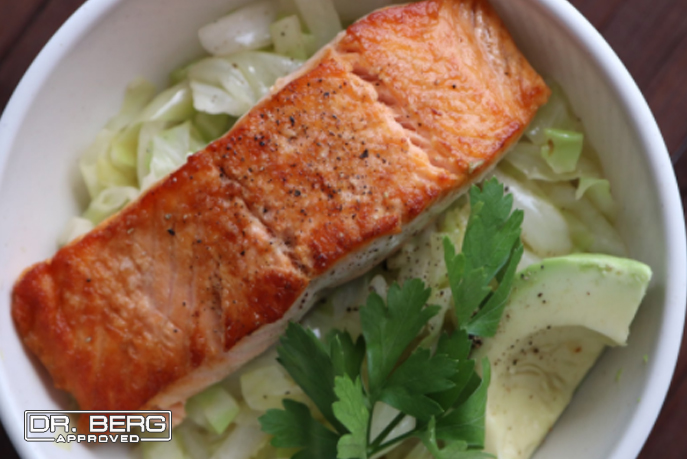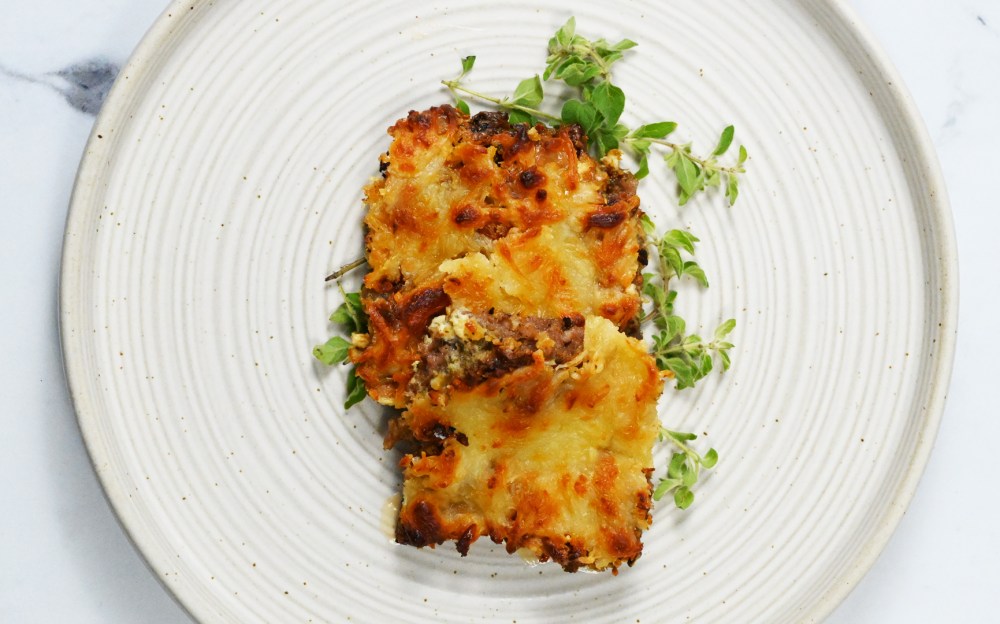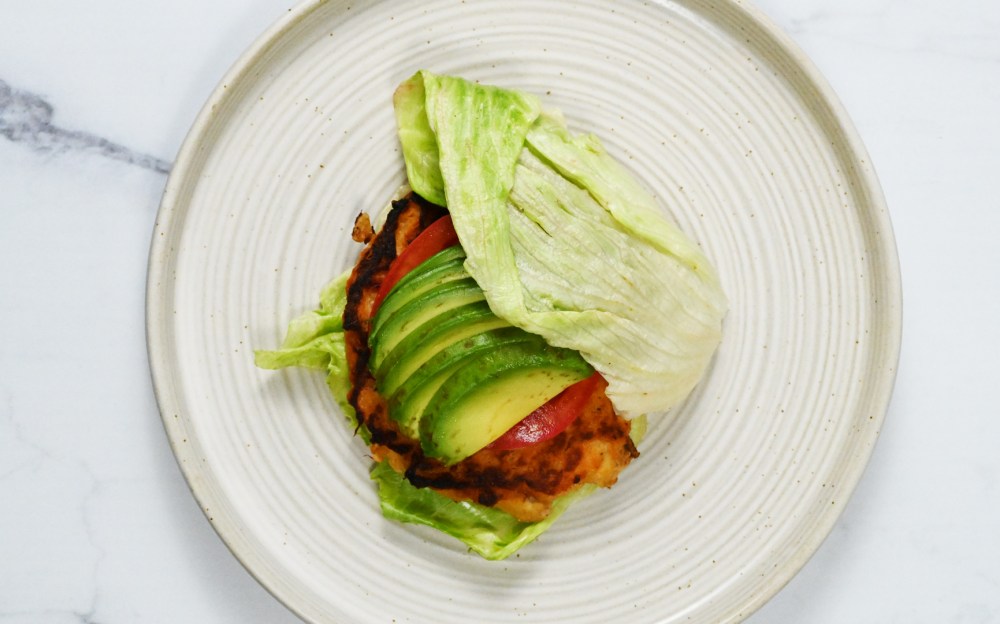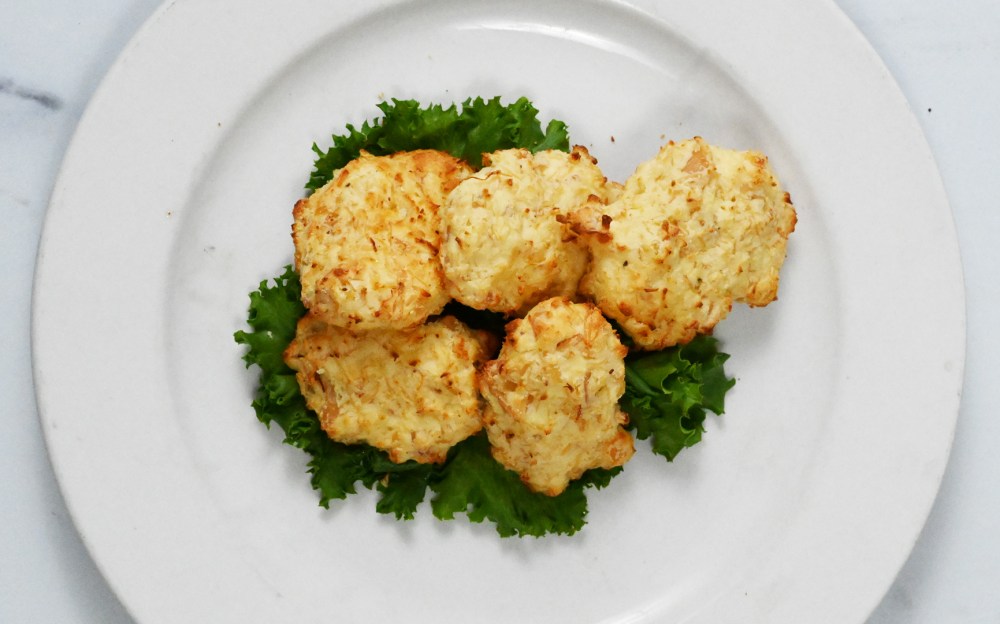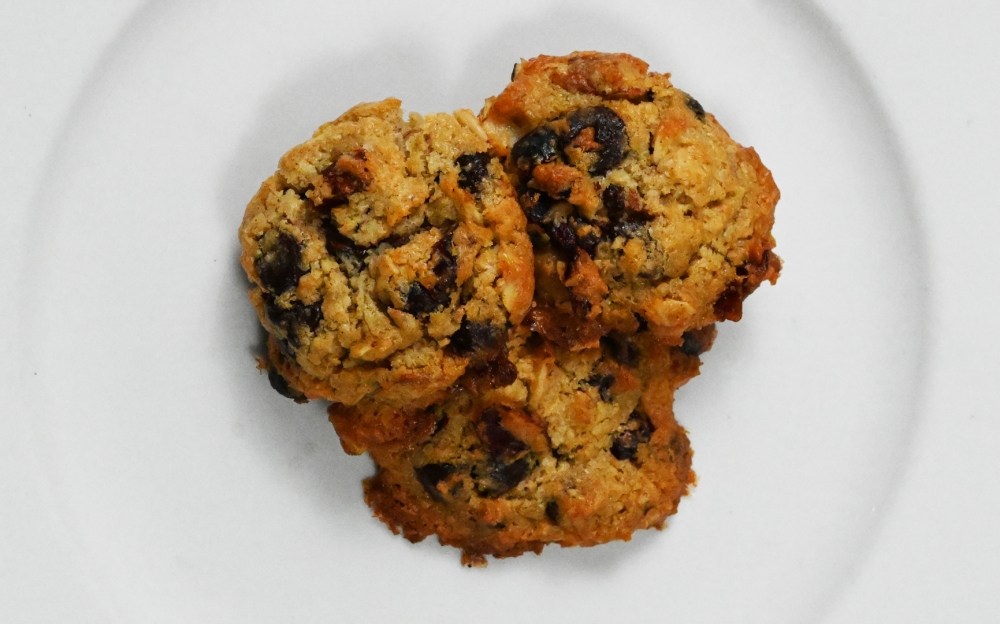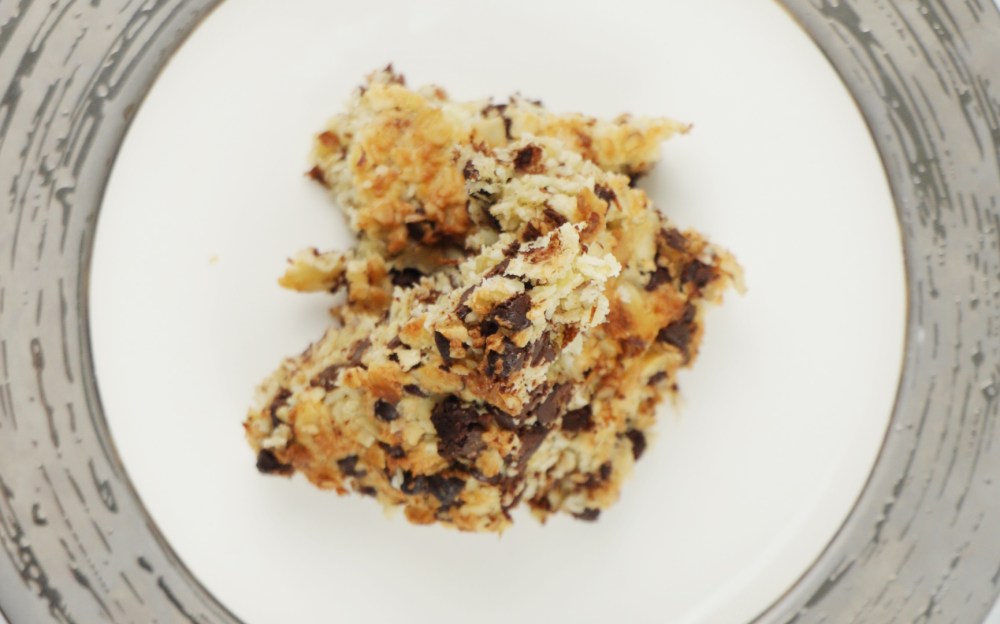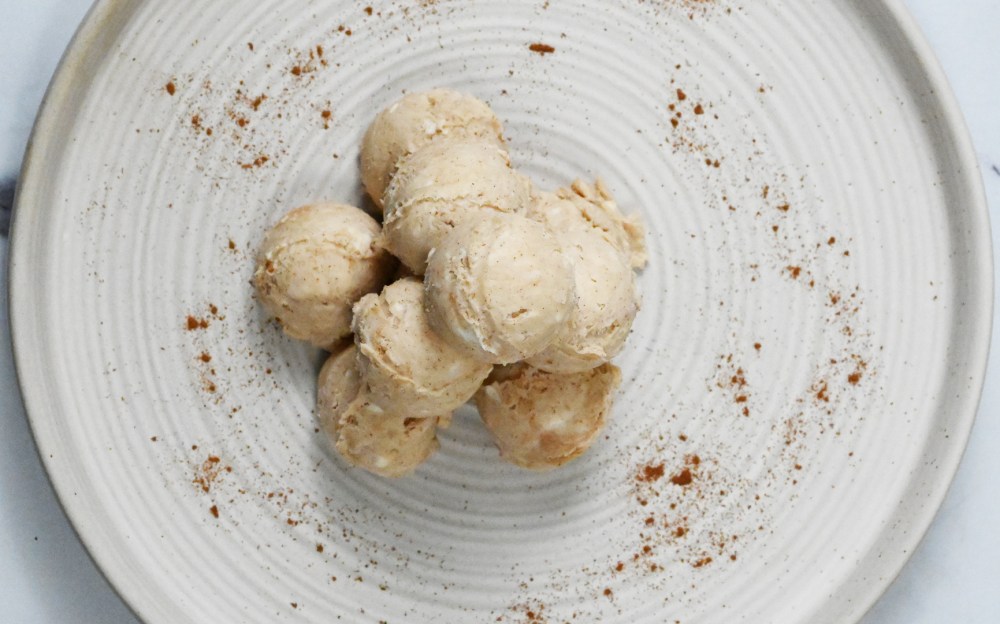The keto diet is becoming increasingly popular and for a good reason–it delivers consistent and long-lasting results!
If you’re ready to start a nutritious and health-focused low-carb lifestyle, this Keto Food List provides a comprehensive guide to Healthy Keto®-approved foods that keep you in ketosis, promote fat burning, and support overall health and well-being.
What is keto?
The ketogenic diet is a high-fat, moderate-protein, and low-carbohydrate eating plan designed to shift your metabolism from relying on glucose to burning fat for fuel.
When carbohydrate intake is limited, your body breaks down fat into ketones, an efficient alternative energy source produced by the liver. Once ketones start to enter the bloodstream and begin to fuel the cells, your body enters a metabolic state known as ketosis.
Vital organs such as the heart, brain, and muscles actually prefer using ketones over glucose, making ketosis not only effective but also metabolically beneficial.
“Carbohydrates rapidly raise blood sugar levels and stimulate insulin release,” explains Dr. Berg. “Elevated insulin inhibits fat burning and promotes fat storage, which is why high-carb diets are a major contributor to weight gain.”
To initiate and maintain ketosis, it’s essential to keep blood sugar and insulin levels stable. This is typically achieved by limiting net carbohydrate intake to 20 to 50 grams per day.
The longer you remain in ketosis, the more efficiently your body adapts to burning fat as its primary energy source. This metabolic shift supports sustainable weight loss, stable energy levels, enhanced mental clarity, improved mood, and better memory function.
In addition, research published in Signal Transduction and Targeted Therapy highlights the potential role of a low-carbohydrate, high-fat diet in managing and preventing various chronic diseases.1
The authors of this study summarize, “The ketogenic diet has received extensive interest because of its beneficial effects in a number of diseases, such as neurological disorders, obesity, type 2 diabetes mellitus, cancer, intestinal disorders, and respiratory compromise.”
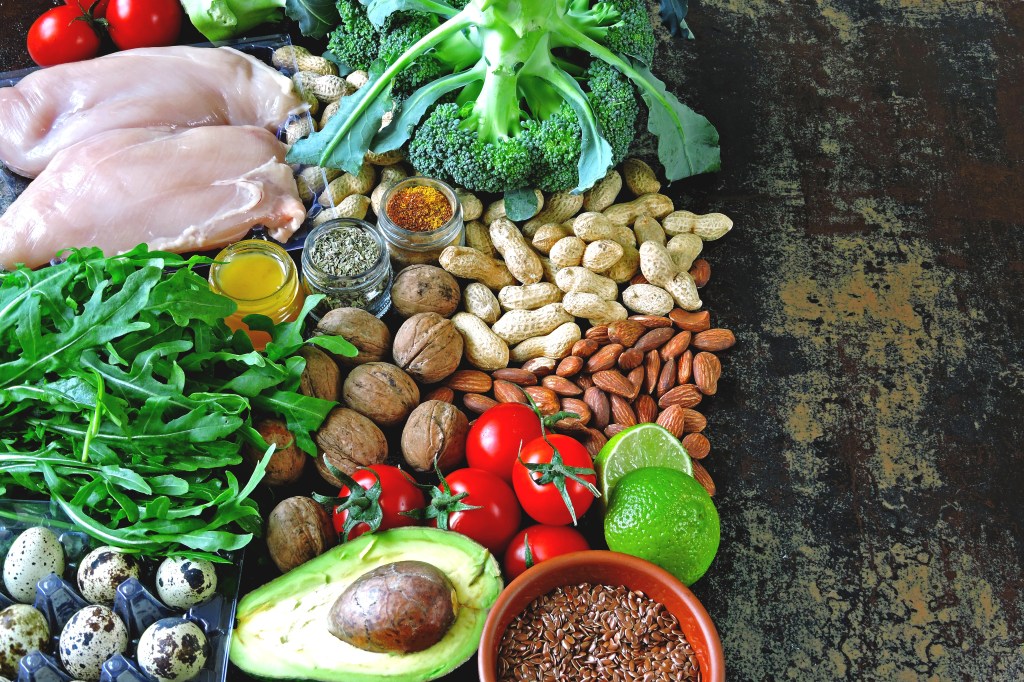
What makes Healthy Keto different?
Keto is a low-carbohydrate diet originally developed as a medical treatment for epilepsy and other neurological disorders. While effective for its intended purpose, early versions of this diet lacked a focus on meeting nutritional needs.
Achieving ketosis is just one aspect of promoting well-being, as the body also depends on a broad spectrum of vitamins, minerals, and antioxidants to support optimal physiological function and overall health.
Simply following a high-fat, low-carb diet without considering nutrient quality can lead to poor nutrition and deficiencies, especially if it includes processed foods, unhealthy trans fats, and artificial additives.
Healthy Keto offers a more holistic solution to traditional low-carb approaches as it combines the fat-burning advantages of ketosis with a strong emphasis on minimally processed and nutrient-rich foods.
By prioritizing non-genetically modified (GMO) organic vegetables, full-fat organic dairy, pasture-raised eggs, grass-fed beef, organ meats, wild-caught fish, and game meats, Healthy Keto delivers both metabolic benefits and comprehensive nutrition.
In addition, prioritizing non-GMO vegetables, grass-fed meats, and organic dairy limits exposure to pesticides, herbicides, and synthetic chemicals. This eases the burden on your liver and supports critical detoxification pathways linked to overall better health and well-being.
Healthy Keto isn’t just about lowering carbs–it’s about fueling the body with the highest-quality nutrients to promote fat burning, enhance energy, and support long-term wellness.
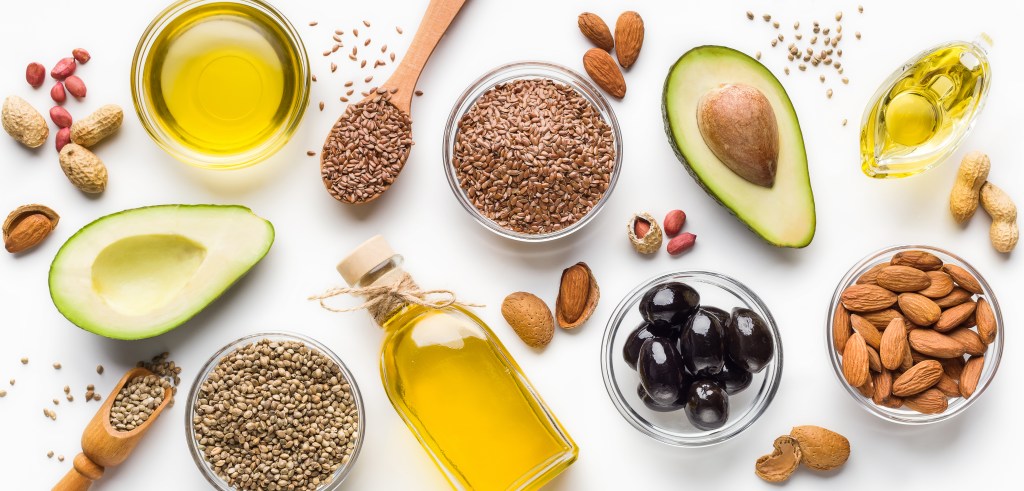
Keto-approved fat
On the ketogenic diet, fat serves as your body’s primary source of fuel. Getting the right amount of keto fats and choosing the right types is essential for long-term keto success.
Fat offers more than just energy. Because high-fat foods are digested significantly slower than carbohydrates, fat helps keep you full for longer periods, making it an effective tool for appetite control and weight loss.
This has been confirmed by research published in Current Opinion in Clinical Nutrition and Metabolic Care, highlighting that high-fat ketogenic diets support satiety and can help achieve sustainable weight loss.2
Fat is also necessary for absorbing key fat-soluble nutrients, such as vitamins A, D, E, and K, which play an essential role in regulating inflammation, hormonal balance, and immune support.
There are several types of dietary fats, including saturated, monounsaturated, and polyunsaturated fats. Saturated fats are commonly found in many nutrient-rich, keto-friendly whole foods and can be part of a well-formulated ketogenic diet.
For optimal health, include a wide variety of nutrient-dense fats, with a focus on heart-healthy monounsaturated fats. Good sources include olives, extra virgin olive oil, avocados, macadamia nuts, and lard from pasture-raised animals.
Keto fats
- Avocado
- Avocado oil
- Blue cheese
- Brie cheese
- Butter
- Cocoa butter
- Coconut butter
- Coconut oil
- Cream cheese
- Duck fat
- Egg yolks
- Extra virgin olive oil
- Ghee
- Half and half
- Lard
- Macadamia oil
- MCT oil
- Red palm oil
- Sesame oil
- Sour cream (organic)
- Tallow
- Walnut oil
- Whole cream
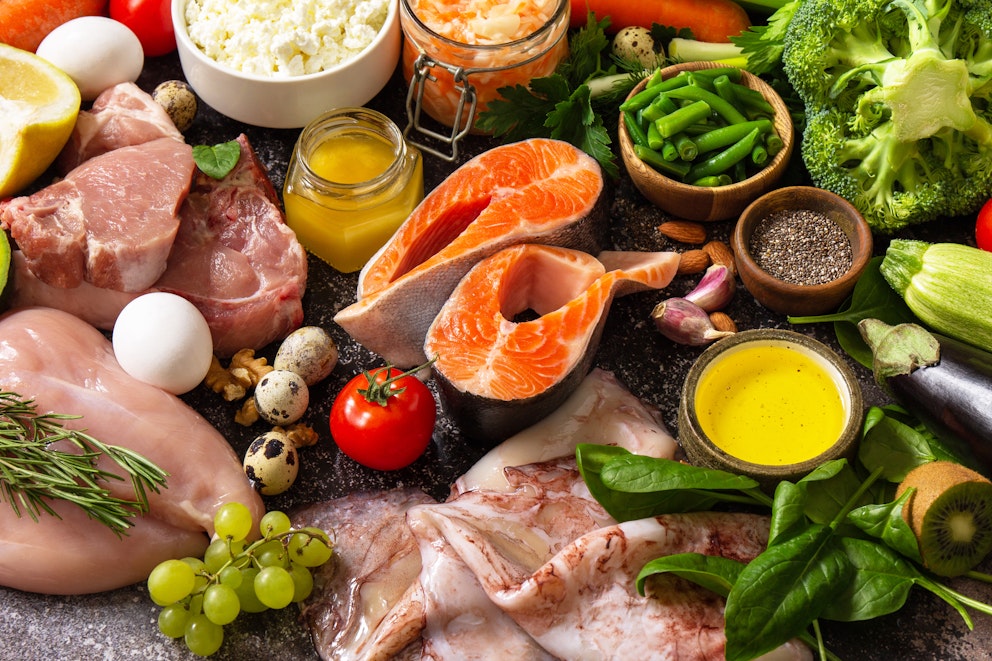
Keto-approved protein
Protein is a crucial macronutrient that provides amino acids, which are needed for building lean muscle, repairing tissues, and supporting hormone production.
While the body can produce many amino acids, there are nine it cannot make. These are known as essential amino acids and must be obtained through dietary sources.
Animal-based proteins are considered complete proteins as they offer all nine essential amino acids, making them especially beneficial options for those following a ketogenic diet.
While protein is necessary, consuming too much, especially from very lean sources, can raise insulin levels and interfere with ketosis. It’s best to aim for around 3 to 6 ounces (85 to 170 grams) of protein per meal to stay in a fat-burning state while still meeting your protein needs.
Many protein-rich and keto-approved foods also contain healthy fats. These options allow you to meet your protein requirements while also supporting your fat intake, which is essential for maintaining energy and satiety on keto.
Meals that include both fat and protein slow digestion and help you feel full for longer. This can reduce hunger, support weight loss, and make it easier to follow intermittent fasting routines.
Keto proteins
- Bacon
- Beef
- Beef jerky
- Bison
- Cheese
- Chicken
- Cottage cheese
- Deer
- Duck
- Pasture-raised, organic eggs
- Elk
- Goat
- Goose
- Hot dogs
- Lamb
- Moose
- Pepperoni
- Pheasant
- Plain Greek yogurt
- Pork
- Pork rinds
- Quail
- Rabbit
- Salami
- Sausage
- Sheep
- Turkey
- Veal
- Wild boar
- Wild turkey
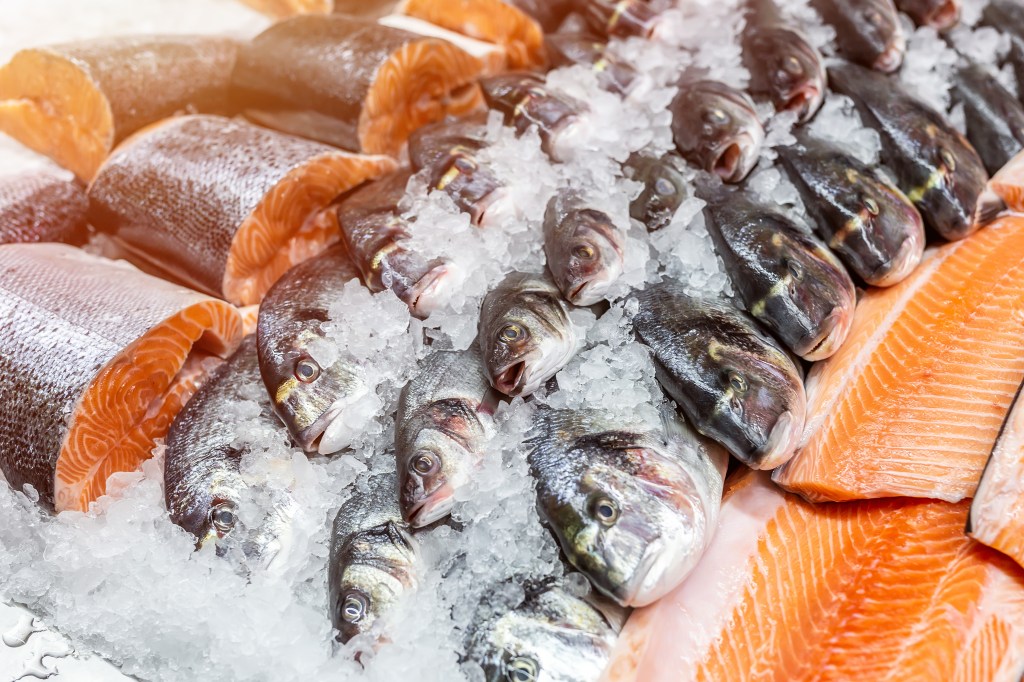
Keto fish
- Anchovies
- Bass
- Cod
- Eel
- Flounder
- Grouper
- Haddock
- Halibut
- Herring
- Mackerel
- Mahi-mahi
- Orange roughy
- Perch
- Red snapper
- Rockfish
- Salmon
- Sardines
- Sole
- Tilapia
- Trout
- Tuna (including albacore)
- Turbot
Keto seafood
- Abalone
- Caviar
- Clams
- Crab
- Lobster
- Mussels
- Octopus
- Oysters
- Scallops
- Shrimp
- Squid
Keto organ meats
- Bone marrow
- Heart
- Kidney
- Liver
- Tongue
- Tripe
Keto vegan protein
- Hummus
- Mushrooms
- Nut butters (unsweetened)
- Nutritional yeast
- Seed butters (unsweetened)
- Seeds (sunflower, sesame, pumpkin)
- Spirulina
- Sprouted beans
- Tofu/Tempe (organic)
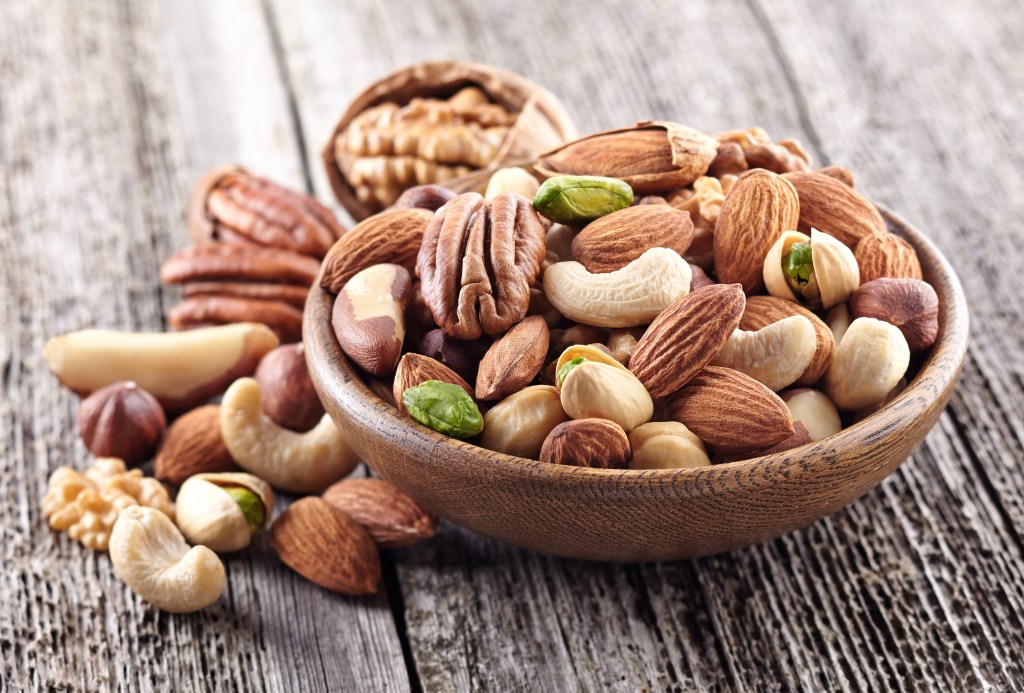
Keto-approved nuts and seeds
Not incorporating nuts and seeds into your Healthy Keto lifestyle means you are missing out on valuable nutrition and the potential health benefits they offer.
Seeds and nuts are packed with essential nutrients, including healthy fats, fiber, vitamins, and minerals that support heart health, brain function, memory, and immune support.
Keto-friendly nuts are especially high in monounsaturated fats and low in carbohydrates, making them ideal for a nutritious low-carb diet. Their fiber content also promotes digestive health, while key micronutrients contribute to cardiovascular wellness.
This has been confirmed by research published in Nutrients, highlighting that regular nut consumption has been associated with a lower risk of heart disease, diabetes, gallbladder disease, and high blood pressure.3
However, it’s important to remember that while nuts are highly nutritious, they’re also calorie-dense. To prevent unintentional weight gain, enjoy them in moderation and avoid frequent snacking, which is one of the biggest weight loss mistakes people make when following keto.
Keto nuts and seeds
- Almonds
- Brazil nuts
- Chia seeds
- Hazelnuts
- Hemp seeds
- Macadamia nuts
- Nut butters (unsweetened)
- Peanuts
- Pecans
- Pine nuts
- Pistachios
- Pumpkin seeds
- Seed butters (unsweetened)
- Sesame seeds
- Sunflower seeds

Keto-approved vegetables
If you are following a Healthy Keto lifestyle, it’s crucial to know that not all vegetables are created equal.
A helpful general rule is that vegetables growing above the ground tend to be lower in carbohydrates than those that grow below the surface. While this is not always the case, it can guide you toward better choices.
Focus on green leafy vegetables such as spinach, kale, arugula, and romaine lettuce, which are naturally low in carbs and packed with essential vitamins, minerals, antioxidants, and fiber.
It’s important to avoid starchy vegetables such as sweet potatoes, carrots, beets, and corn, as they’re carb-heavy and can interfere with your ability to achieve and maintain ketosis.
Incorporating 7 to 10 cups of non-starchy vegetables and salad daily is a cornerstone of the Healthy Keto approach. This not only helps you stay in ketosis but also supports digestion, boosts energy, and provides the nutrients your body needs to thrive.
To get the most benefits, choose fresh and organic produce whenever possible. These options are typically richer in nutrients and free from unwanted chemicals.
Frozen vegetables are also a great alternative, especially when fresh options are limited. Just make sure they’re plain and free from added sauces or sugars.
Keto vegetables
- Artichoke
- Arugula
- Asparagus
- Bean sprouts
- Beet greens
- Bell peppers
- Bok choy
- Broccoli
- Brussels sprouts
- Butterhead lettuce
- Cabbage
- Carrots
- Cauliflower
- Celery
- Chard
- Chives
- Cucumber
- Dandelion greens
- Eggplant
- Endive
- Fennel
- Garlic
- Green beans
- Jicama
- Kale
- Kimchi
- Kohlrabi
- Leafy greens
- Leeks
- Microgreens
- Mushrooms (all kinds)
- Mustard greens
- Okra
- Olive
- Onion
- Parsley
- Peppers (all kinds)
- Pumpkin
- Radicchio
- Radishes
- Rhubarb
- Romaine lettuce
- Sauerkraut
- Scallions
- Seaweed (all sea vegetables)
- Shallots
- Spaghetti squash
- Spinach
- Swiss chard
- Tomatoes (moderate amount)
- Turnip greens
- Watercress
- Zucchini

Keto-approved berries and fruit
Whether a fruit is keto-friendly depends on how many carbohydrates it contains and how much fiber it provides. Fiber slows down the effect of carbs on your blood sugar, which is why fruits that are rich in fiber can still be part of a keto meal prep in moderation.
Berries are one of the best fruit choices for Healthy Keto. They’re naturally rich in fiber and contain less carbohydrate than most other fruits. Despite this, it’s still important to monitor portion sizes and track their net carb content to make sure they fit within your daily limits.
Some critics of the keto diet argue that limiting fruit intake may result in nutritional gaps. However, avoiding most fruits doesn’t mean your body will lack essential nutrients.
A well-formulated keto diet that includes nutrient-dense vegetables and low-carb fruits such as berries can fully support your nutritional needs.
Various vegetables, including kale and bell peppers, are rich sources of vitamins and minerals. In fact, both provide significantly more vitamin C per serving than an orange, making them excellent substitutes for higher-sugar fruits.
Keto berries and fruit
- Blackberries
- Black currant
- Blueberries
- Chokeberries
- Cultivated European gooseberries
- Lemon
- Lime
- Raspberries
- Red currant
- Sea buckthorn
- Strawberries
- Tart cherries

Keto-approved herbs
Herbs and spices not only enhance the taste of your meals but also provide powerful health benefits that perfectly complement a well-rounded Healthy Keto diet.
Most fresh and dried herbs are naturally low in carbohydrates, making them an excellent choice for keto-friendly cooking.
Growing your own herbs at home is a simple and rewarding way to keep your favorites on hand year-round. Whether you use basil, thyme, rosemary, or parsley, fresh herbs add both flavor and nutrients to your dishes.
In addition, dry herb blends made without added sugars or starches are safe to use on a ketogenic diet.
However, it’s important to read ingredient labels carefully. Many commercial spice mixes, rubs, and marinades include hidden sugars, preservatives, or starch-based fillers that can disrupt ketosis.
Keto herbs and spices
- Allspice
- Basil
- Cardamom
- Cayenne pepper
- Chili powder
- Cilantro/Coriander
- Cinnamon
- Cloves
- Cumin
- Curry powder
- Dill
- Garlic
- Ginger
- Italian seasoning
- Nutmeg
- Oregano
- Paprika
- Parsley
- Rosemary
- Sage
- Thyme
- Turmeric

Keto-approved liquids
Staying hydrated is essential on a keto diet, and pure water is one of the best choices. Whether you prefer filtered, bottled, or sparkling water, make sure it contains no added sugars or artificial ingredients.
For extra support during ketosis, consider adding electrolytes to your water to promote optimal hydration, mineral balance, and steady energy levels.
If you are looking for more variety, there are several keto-friendly drinks that can fit into your routine. Unsweetened nut milks, such as almond or coconut milk, are excellent options as they’re low in carbs and rich in healthy fats, making them both satisfying and nutritious.
Coffee can also be enjoyed on keto, ideally black or with a splash of unsweetened nut milk or half-and-half. It’s best to keep coffee intake moderate, as too much caffeine can trigger heartburn or increased blood pressure, especially in those who are sensitive to its stimulating effects.
Herbal teas offer a relaxing and flavorful keto beverage option without caffeine. They can be enjoyed hot or cold and are perfect for sipping throughout the day without interfering with your keto goals.
Keto liquids
- Chicken, beef, and bone broths
- Club soda
- Coconut milk (unsweetened)
- Almond milk (unsweetened)
- Black coffee
- Bulletproof coffee
- Herbal teas
- Kombucha (low-sugar varieties)
- Lemon and lime juice (small amounts)
- Lemon water
- Seltzer water
- Sparkling mineral water
- Tea (unsweetened)
- Water

Keto-approved additionals
Following Healthy Keto offers plenty of room for creativity in the kitchen. While there are countless keto-friendly recipes available, creating your own meals can be both fun and rewarding.
To get started, keep a few essential ingredients on hand that support your low-carb, high-fat goals.
Low-carb ingredients such as almond flour, shredded coconut, monk fruit sweetener, and high-quality dark chocolate make it easy to prepare satisfying desserts without breaking ketosis.
For savory dishes, having the right condiments can make all the difference. Items such as mayonnaise, mustard, hot sauce, and coconut aminos add flavor and depth to meals without loading your plate with unwanted carbs.
Keto ingredients
- Almond flour/meal
- Cacao nibs
- Cacao powder
- Coconut aminos
- Coconut flour
- Dark chocolate 100%
- Fermented vegetables
- Fish oils
- Fish sauce
- Gelatin
- Gluten-free tamari sauce
- Hot sauce (sugar-free)
- Mayonnaise (seed oil-free)
- Monk fruit extract
- Mustard (sugar-free)
- Pickles (sugar-free)
- Shredded coconut
- Stevia
- Vanilla extract
- Vinegar
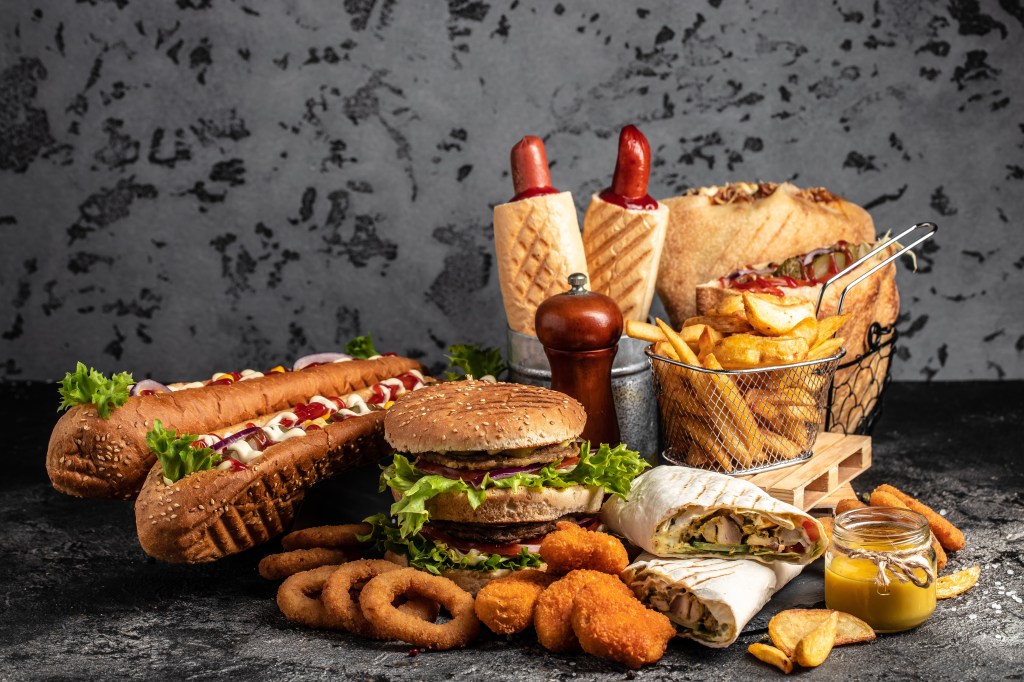
Foods to avoid on keto
To maximize the benefits of Healthy Keto, it’s crucial to avoid foods that can disrupt ketosis. While small amounts of carbohydrates are acceptable, you should keep your daily net carb intake below 50 grams to maintain ketosis.
High-carb foods such as bread, cereal, pasta, rice, pancakes, biscuits, cakes, and puddings should be avoided. Starchy vegetables, such as sweet potatoes, beets, and corn, also raise blood sugar levels quickly and can slow down or inhibit fat-burning.
While most fruits aren’t suitable for keto, berries can be enjoyed in moderation. However, it’s best to prioritize keto-friendly low-carb vegetables, as they provide essential nutrients that support your overall health without the added carbs.
In addition, avoid fruit juices, energy drinks, sports drinks, sugary coffees, cocktails, wine, and beer. Diet sodas and other sugar-free beverages are also not recommended as they often contain artificial sweeteners and sugar substitutes that may interfere with your keto health goals.
Be vigilant about added sugars and avoid ingredients such as honey, syrups, and sugar substitutes, including maltodextrin, dextrose, and polydextrose. Many packaged foods contain these hidden carbohydrates that act as fillers or preservatives to improve texture and prolong shelf life.
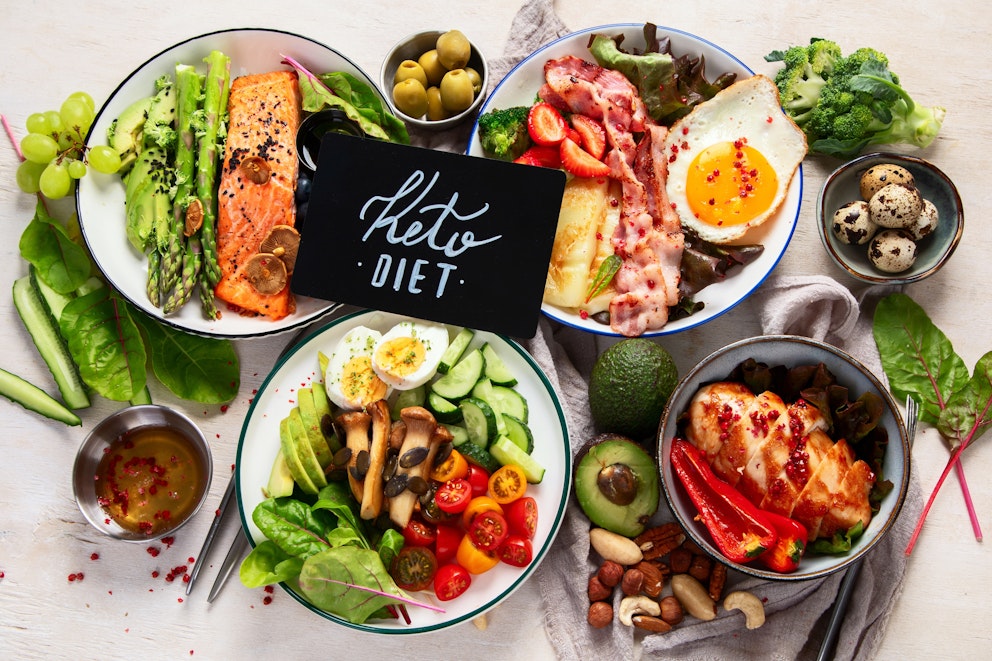
Key takeaways
Adopting a Healthy Keto lifestyle is an excellent way to support overall health and well-being.
With a wide range of low-carb options on the Keto Food List available, you can enjoy a wholesome and nourishing diet while staying in ketosis.
Prioritize high-quality ingredients by choosing organic and non-GMO vegetables, grass-fed meats, wild-caught fish, and game meat, and incorporate healthy fats, pasture-raised eggs, and organic full-fat dairy to maintain fat-burning and promote optimal health.
Keto meal examples
Following a ketogenic diet doesn’t have to be boring or limited. From easy morning meals to hearty dinners and guilt-free sweet treats, Healthy Keto offers a wide range of tasty choices to keep your meals exciting and satisfying.
If you’re just getting started, exploring a keto diet for beginners guide can help you build simple, delicious meals that fit your goals.
Keto dessert examples
Looking for keto sweet snacks that fit your keto lifestyle? These keto dessert recipes prove you don’t have to give up delicious flavors while staying low-carb and in ketosis.
FAQ
1. What foods can I eat on keto?
On Healthy Keto®, emphasize low-carb, high-fat foods such as leafy greens and non-starchy vegetables, along with healthy fats such as avocado, olive oil, and coconut oil.
In addition, include moderate amounts of high-quality proteins like grass-fed meat, wild-caught fatty fish, and pasture-raised eggs to support muscle function and hormonal balance.
2. What are the top 10 foods on keto?
The top ten foods to have on keto are shellfish, salmon, sardines, leafy greens, pasture-raised eggs, cruciferous vegetables, avocados, olives and olive oil, grass-fed beef, and nuts and seeds.
3. What can I not eat when on keto?
On keto, avoid high-carb foods such as grains, sugars, starchy vegetables, and most fruits, as well as processed foods and artificial sweeteners that can disrupt ketosis.
4. Can I have fruit on keto?
While most fruits are high in carbs and not keto-friendly, fiber-rich berries such as blackberries, blueberries, raspberries, and black currants can be enjoyed in moderation without affecting ketosis.
5. Can I have carbs on keto?
While carbohydrates are allowed on keto, it’s crucial to limit net carb intake to no more than 20 to 50 grams per day to maintain ketosis. Higher carbohydrate intake can quickly interfere with fat burning and kick you out of ketosis.
6. Can I eat desserts on keto?
Traditional desserts are typically high in sugar and grain flour, making them unsuitable for keto. However, there are plenty of keto-friendly alternatives using ingredients such as monk fruit, shredded coconut, dark chocolate, and almond flour to create delicious low-carb treats.
7. How many carbs can I have on keto?
On keto, most people aim to consume no more than 20 to 50 grams of net carbohydrates per day to maintain ketosis.
8. How do I calculate net carbs?
Net carbs equal total carbs minus fiber, providing a more precise measure of the carbohydrate intake that affects blood sugar and insulin levels, since dietary fiber isn’t absorbed.
For example, one cup of raw spinach contains about 1 gram of total carbs and 0.7 grams of fiber, leaving 0.3 grams of net carbs.
9. What is the difference between keto and Healthy Keto?
Keto focuses primarily on reducing carbohydrates and increasing fat intake to achieve ketosis.
Healthy Keto goes further by emphasizing nutrient-dense, whole foods such as organic vegetables, high-quality proteins, and wholesome fats to support overall wellness in addition to maintaining ketosis.
10. Do I have to eat organic foods on keto?
While eating organic foods on keto isn’t mandatory, choosing organic produce can help reduce exposure to pesticides and herbicides and support better overall health.
11. What foods can I have on dirty keto?
Dirty keto allows foods that fit your carb limits, including processed and packaged items. This approach focuses on maintaining ketosis without emphasizing food quality or nutrient density.
While dirty keto may help achieve some weight loss, it often lacks the essential nutrients found in minimally processed foods. This can impact overall health and wellbeing, making it less sustainable than a more health-conscious and nutrient-focused Healthy Keto approach.
12. Can I have sugar alcohols on keto?
Certain sugar alcohols, such as erythritol and xylitol, are keto-friendly and have minimal effect on blood sugar. However, maltitol can raise blood sugar levels and disrupt ketosis and should be avoided.
13. Do I have to avoid all sugar on keto?
Yes, sugar is a carbohydrate and not keto-friendly as it quickly raises blood sugar and insulin levels, which prevents your body from burning fat and entering ketosis.
14. Are cheat meals okay on keto?
Cheat days aren’t advisable on keto as they disrupt ketosis, and it may take several days to get back into fat-burning mode. This interruption slows your progress, limits metabolic flexibility, and counteracts the benefits of a well-formulated Healthy Keto diet.
15. Can I get keto foods at fast-food restaurants?
While you may find low-carb options in fast-food restaurants, they’re typically heavily processed, low in nutrients, and high in trans fats and artificial ingredients, making them unsuitable for a health-focused ketogenic diet.
16. How many eggs a day can I have on keto?
Eggs are an excellent food on keto because they’re low in carbs, high in healthy fats, and packed with essential nutrients. Including up to four eggs daily fits well within a well-formulated keto diet plan and is an excellent strategy to support your body’s nutritional needs.



